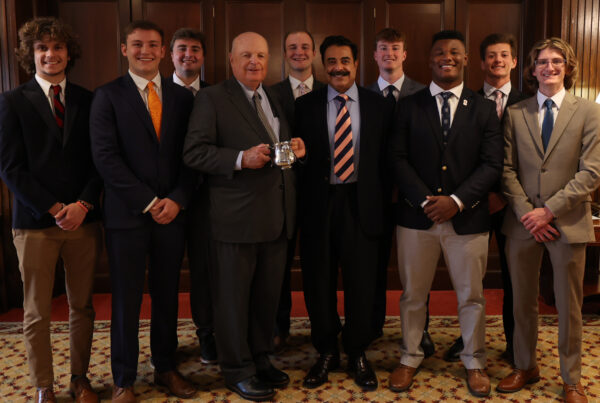Discovered in 2017 and donated to the Beta Theta Pi Archives and Museum for preservation by full-time antique dealer Chris Papadakis, Colorado Mines ’88, an original 1888 Victorian archival photograph of Indiana University’s Pi Chapter arrived in Oxford shrouded in mystery. That is, until one curious alumnus, Dr. Charlie McCormick, Indiana ’72, took up the mantle to bring this piece of his alma mater’s heritage back to life.
With help from web-based resources, the chapter’s census and roll book, and historical texts like “The First Hundred Years of ΒϴΠ at Indiana University” by Karl Fischer, Indiana 1925, McCormick learned that, amongst the stovepipe hats and extra long morning coats, was an accomplished brotherhood of future state senators, mayors, judges, inventors and school superintendents.
The following was authored by Dr. Charlie McCormick, Indiana ’72.
The Beta Theta Pi Administrative Office received this Victorian archival photograph – a posed snapshot of the 1888 Pi Chapter in a parlor and otherwise unidentified as to location – in 2017. Though tinted sepiatone, the photo was of the silver emulsion type and not a daguerreotype image.
Remarkably well preserved as an early example of fraternity chapter photography, who were these pioneer brothers? As an Indiana University alumnus myself, it piqued my curiosity!
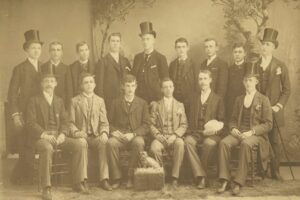
Pi Chapter at Indiana University, 1888
On the surface, I immediately noted several things: A floral/tree background was a common appointment for photo parlors at the time, though the rug and hay floor treatment is special and unusual. Among the 15 men, there are six hats portrayed – most of them of the stovepipe variety, which gradually ceded their popularity to those deemed “more manageable.” Jackets were longer and more like classic tuxedos, and vests were everywhere.

Charlie McCormick
The details and stories of those pictured would require additional research using a bounty of resources, including web-based resources like Ancestry.com; Indiana University records of early graduates and students; Beta Theta Pi census data on early members; the Pi Chapter Roll Book; and a publication by my chapter brother, Karl Fischer, Indiana 1925, entitled “The First Hundred Years of ΒϴΠ at Indiana University.” Therein, I discovered essential seed information on these men, such as their birth dates, hometowns, pledge and initiation dates, and career highlights.
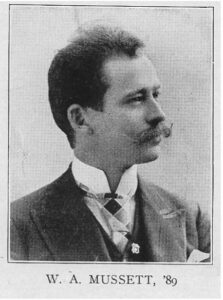
W.A. Mussett
William Alonzo Mussett 1889, clearly identifiable on the front row far left because of his distinct mustache, eye lines and ears, was initiated April 7, 1888. Originally from the border town of Grayville, Illinois, Mussett was “lifted” from Phi Kappa Psi fraternity as “one of their best men.” He graduated with a Bachelor of Arts in philosophy in 1889, married his Beta Sweetheart, Ella Shelton, in 1895, and fathered his youngest child at age 56! Professionally, he practiced law in Grayville, Illinois, and was appointed the region’s U.S. Postmaster from 1902-08.
Robert Charles Foster Hight 1888, is in the front row, third from. Referenced in Shepardson’s “Beta Lore,” Hight was Pi Chapter Roll No. 297, admitted to the light on May 12, 1884.
An associate editor of the “Indiana Daily Student” newspaper, “Foster” (as he was known amongst his peers) was a great exponent of fraternity life and in 1888 organized Tau Epsilon Pi – also known as “JawBones” – a seven-member senior class Greek society recognition.
He began serving as a high school principal in 1904, and was later appointed superintendent of public schools in Lafayette, Indiana. He died in 1928 from prostate cancer.
Notable about Hight’s membership, it was discovered he was a charter member of Kappa Sigma and one of its strongest advocates. This “dual citizenship” led him to be expelled from Beta Theta Pi, though several years later he petitioned the fraternity and won reinstatement.
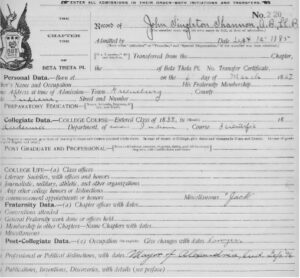
John Singleton Shannon Roll Book Entry
In the front row, second from left, is Roll No. 220 – John Singleton Shannon 1888. “Jack” became mayor of Alexandria, Indiana, in September 1896 and served until 1905.
Forth from the left in the front row is Albert Miller, initiated. No additional biographical information could be found.
Next to Miller is Joseph Francis Thornton 1888. First a superintendent of the Bedford Electric Light and Power Company, Thornton later obtained an LL.B. at Chicago and an M.A. at Columbia before retiring as assistant superintendent of public schools in Indianapolis. His son and grandson are Betas!
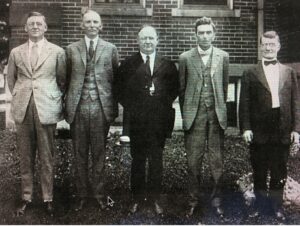
First five mayors of Alexandria, Illinois. John Singleton Shannon pictured second from left.
Front row far right is Bedford Vance Sudbury 1890, roll# 217. Going by the nickname “Sud,” he played baseball for Indiana University and was employed as a tax assessor and real estate person.
Back row far left in the 1888 photograph is Charles Rolland Madison 1890, Roll No. 218, who was admitted to membership February 5, 1885. A Midwest native, Madison relocated to Northern California and became a teacher, building company superintendent and father of four.
Next to Madison is Louis Lorenzo Drescher 1891, who was born, raised and lived in Spencer, Indiana. He died August 15, 1954, age 85, and not much more is known about this Beta brother.
Rear third from left is Walter Dunn Howe 1890, Roll No. 214. Alongside his beloved Beta Theta Pi, Howe enjoyed memberships in Phi Delta Phi and the Philomathean Literary Society. After earning his law degree at Boston University, he married Marie Hobson Shelton in El Paso, Texas, where he served in the district and circuit Courts as justice of the peace (1894), as registrar of voters (1896), U.S. commissioner (1899) and district judge (1916).
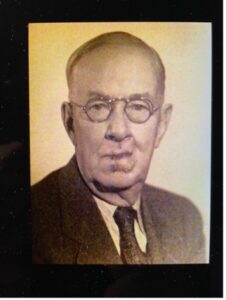
Judge Walter Dunn Howe
Isiah Scobey Cunningham 1893 is seen in the back row, fourth from left. “Scobey” was a literary major who later married Bertha “Birdie” Deniston, a founder of DePauw University’s Alpha Chi Omega. A lifelong Indianapolis resident, Cunningham fathered two sons.
Son of a prestigious business and land owner in Evanston, Indiana, Frederick Washington Cook Jr. 1891, (rear fifth from left) was listed by the university as a freshman student in 1881. As a reminder, this recovered photo is from 1888. Quite a tenure – a “super senior” in the truest sense! Though the 1900 U.S. Census identified him as a wholesale druggist/merchant based in San Antonio, Texas, Cook is credited for patent #602,305 – the time clock invention used for employee arrivals and departures in factories and stores – and #646,018 – the sprinkler stopper, a device to limit fluid deliveries in various applications.
Rear sixth from left is Henry Parker Pearson 1891, who achieved a varied and accomplished resume of public service roles in his lifetime, including the youngest-ever mayor of Bedford, Indiana; secretary-treasurer for the Citizens Trust; and Indiana state senator.
Next to Pearson is Frederick Dudley Cornell 1890. “Lifted as a Phi Gamma Alpha,” he was admitted into Beta’s ranks on September 20, 1886. “Lifting,” or inducting members of other fraternities, was a known but rather limited activity of the era. Cornell was a baseball and football player at Indiana University before conducting additional college work at Cornell University and eventually returning to Kansas and Nebraska in 1905. He became a manager with the P+YA. Missouri Pacific RR, an insurance and real estate executive, and a 33rd-degree Mason who served as general secretary of Scottish Rite and Home.
Rear eighth from left is John Franklin Haughawout Post 1890. A Hoosier football player described as “very bright in his studies,” the 1930 U.S. Census later identified Post as a farmer near his childhood home in Livingston County, Illinois.
Finally, pictured next to Post is Clarance Beard 1891, though no substantive information was found on this Beta brother.
Educational years have led to an awareness of identifying with those ahead of us. Many Betas recall the brothers within our chapter to this day as “get to know the brothers” was a new member’s first commandment!
Lifelong friends can indeed portray the richest slice of life, and all so blessed, relish it! But as this 1888 photograph shows, network development among brothers was really indoctrinated before this term was defined. Decades into careers and family, maintaining brotherhood connection is still a distinctive fraternity trait, and worthy of one’s effort!


